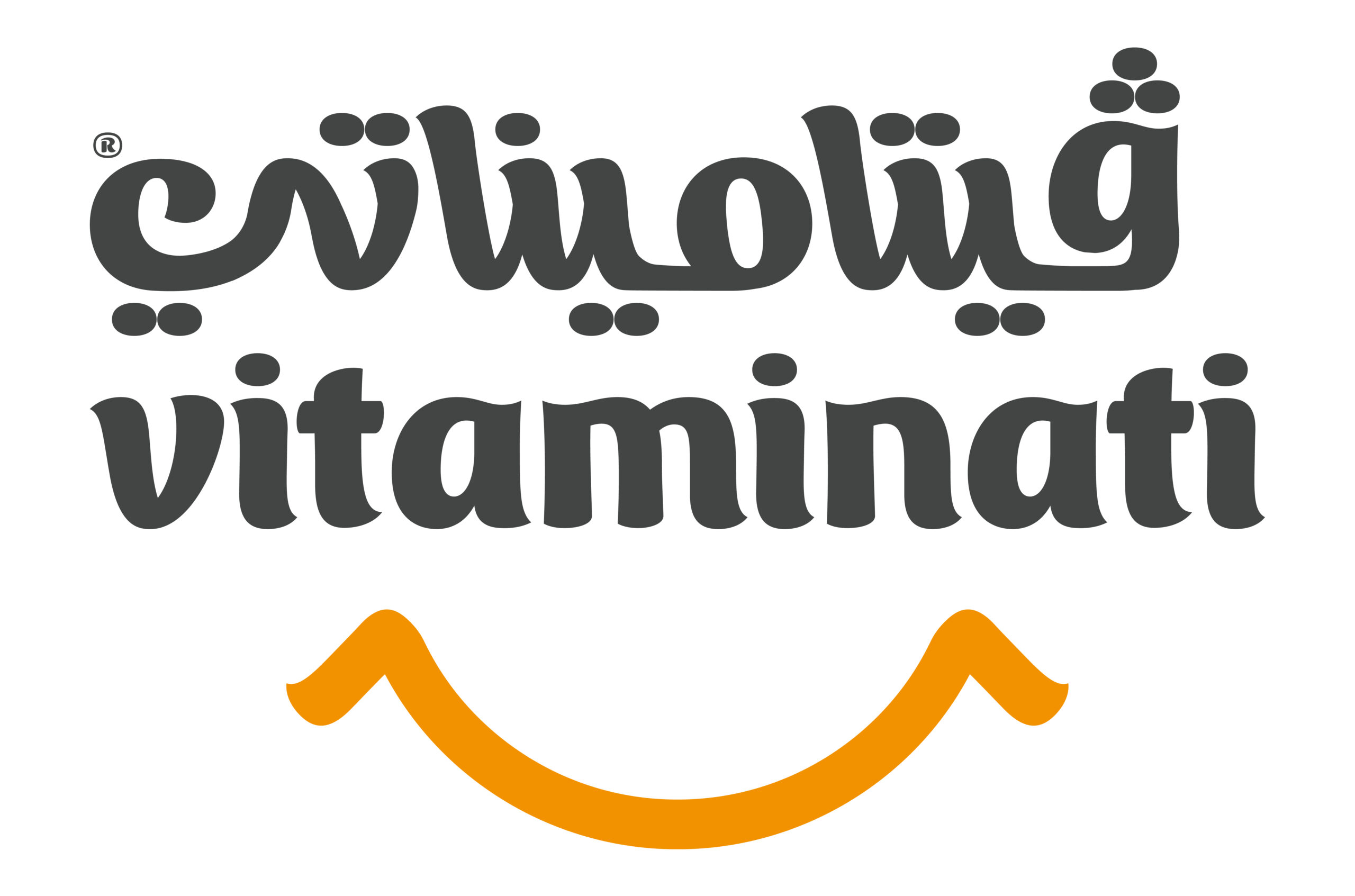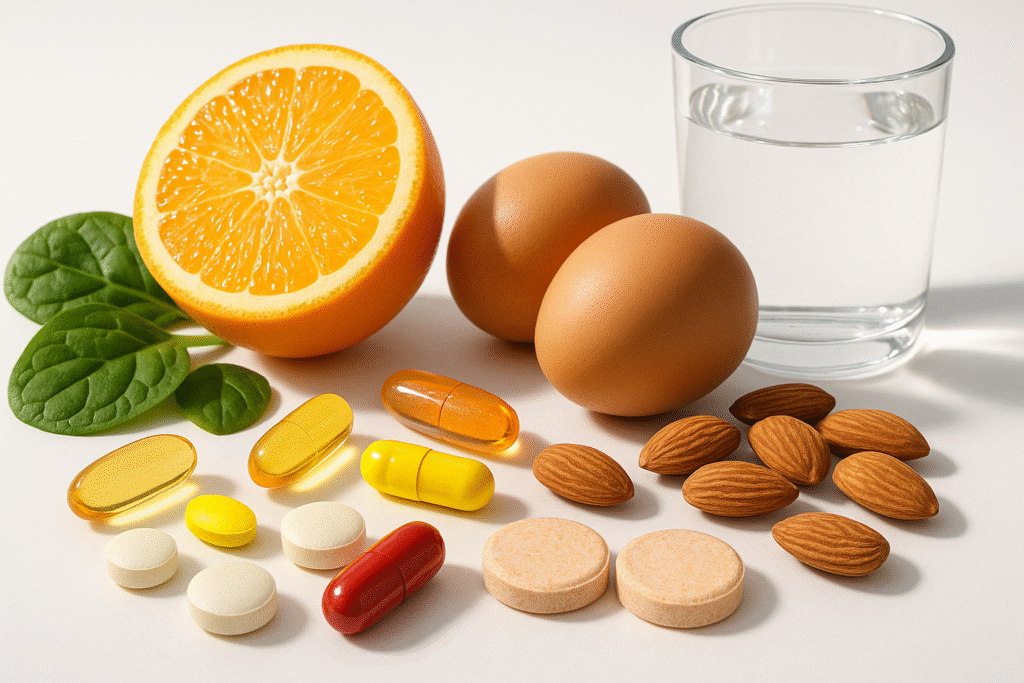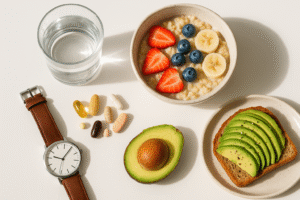Table of Contents
ToggleWhy Do People Confuse Vitamins and Minerals?
Many people believe that vitamins and minerals are the same because they often appear together in advertisements and supplement labels. However, the truth is more complex.
Both belong to a group known as micronutrients — elements the body needs only in small amounts. Yet, the difference between them lies in their nature, source, and biological function.
Vitamins are organic compounds derived from living organisms such as plants and animals, while minerals are inorganic elements that come from the earth and water.
Despite this contrast, the body cannot function properly without either one. They work together in perfect harmony — like keys and locks — where each one unlocks a different vital process in your body.
This confusion often leads to misunderstanding their unique roles. Many people, for instance, take vitamin supplements thinking they can replace a deficiency in iron or calcium, not realizing that those are minerals, not vitamins.
So, let’s start from the beginning: What exactly are vitamins and minerals, and why does the body depend on them so much, despite needing them in tiny amounts?
What Are Vitamins?
Vitamins are organic chemical compounds required in very small amounts to perform vital functions such as energy production, cell regeneration, and immune defense.
The human body cannot produce most vitamins on its own (except for a few like vitamin D, which is synthesized through sunlight exposure). Therefore, they must come from food.
Types of Vitamins:
Vitamins are divided into two main groups based on how they dissolve inside the body:
1. Fat-Soluble Vitamins:
These include vitamins A, D, E, and K. They are stored in the liver and fatty tissues for long periods, so they don’t need to be consumed daily in large amounts. However, overconsumption can lead to toxicity.
-
Vitamin A: Essential for vision and night sight; supports skin health and immunity.
-
Vitamin D: Known as the “sunshine vitamin,” it’s crucial for calcium absorption and bone strength.
-
Vitamin E: A strong antioxidant that protects cells from damage and supports skin and hair health.
-
Vitamin K: Helps blood clotting and contributes to bone and heart health.
2. Water-Soluble Vitamins:
This group includes vitamin C and the B-complex vitamins (B1, B2, B3, B6, B9, B12). They are not stored in the body and excess amounts are excreted through urine, which means they must be replenished daily.
-
Vitamin C: Boosts immunity, supports collagen formation, and speeds up wound healing.
-
B Vitamins: Often called “energy vitamins” because they help convert food into energy. For example, vitamin B12 is vital for red blood cell formation, while vitamin B6 supports the production of neurotransmitters such as serotonin.
In short, vitamins are like chemical keys that unlock hundreds of vital functions in your body every single day.
What Are Minerals?
Minerals are inorganic elements found naturally in the earth and water. Plants absorb them through their roots, and then humans and animals obtain them by eating those plants or plant-fed animals.
Although required in small quantities, minerals are essential for countless functions — from building bones to regulating heartbeat.
Types of Minerals:
1. Macrominerals:
These are minerals the body needs in larger amounts, including calcium, magnesium, potassium, phosphorus, and sodium.
-
Calcium: The main component of bones and teeth; also aids muscle contraction and blood clotting.
-
Magnesium: Involved in over 300 enzymatic reactions, including energy production and blood pressure regulation.
-
Potassium: Maintains fluid balance, regulates blood pressure, and prevents muscle cramps.
-
Sodium: Essential for fluid regulation and nerve signal transmission.
2. Trace Minerals:
The body needs these in tiny amounts, but they are equally vital. They include iron, zinc, copper, iodine, and selenium.
-
Iron: Key element in hemoglobin, which transports oxygen in the blood.
-
Zinc: Supports immune function, aids wound healing, and assists in enzyme activity.
-
Iodine: Crucial for thyroid hormone production.
-
Selenium: A powerful antioxidant that protects cells and supports heart health.
Simplifying the Difference:
To simplify:
-
Vitamins are organic, sensitive to heat and light, and act as catalysts for chemical reactions in the body.
-
Minerals are inorganic, stable under heat, and form the structural foundation for bones, tissues, and fluid balance.
In other words: vitamins are the activators, and minerals are the builders.
Why Vitamins and Minerals Are Essential?
Vitamins and minerals are the body’s microscopic fuel. Without them, the body cannot convert food into energy, repair cells, or produce essential enzymes and hormones.
The Importance of Vitamins:
-
Strengthen the immune system against viruses and bacteria.
-
Support eye, skin, and nerve health.
-
Promote wound healing and cell renewal.
-
Aid enzyme production and metabolism.
The Importance of Minerals:
-
Build bones, teeth, and connective tissues.
-
Maintain water balance inside and outside cells.
-
Transmit nerve signals between the brain and muscles.
-
Regulate blood pressure and heart function.
Without these micronutrients, the body becomes fatigued, concentration drops, immunity weakens, and chronic diseases may develop.
Functional Differences Between Vitamins and Minerals:
The difference between them extends beyond their structure. Vitamins act as chemical coordinators, regulating and activating various metabolic processes, while minerals serve as the physical foundation of the body.
Vitamins are more sensitive to external factors such as heat and light and may lose value during overcooking. Conversely, minerals are more stable and can withstand high temperatures.
Interestingly, many vitamins and minerals depend on each other to function properly. For instance, iron absorption improves with vitamin C, and calcium utilization requires vitamin D.
Benefits of Vitamins and Minerals for Human Health:
These nutrients influence nearly every organ system:
-
Immune system: Vitamin C, zinc, and selenium strengthen the body’s defenses.
-
Bones and teeth: Calcium, vitamin D, and magnesium provide structure and strength.
-
Heart and blood vessels: Potassium and magnesium regulate blood pressure and prevent clotting.
-
Nervous system: Vitamins B12 and B6, along with magnesium, improve focus and mood.
-
Energy and metabolism: B vitamins help convert food into usable energy.
-
Skin and hair: Vitamin E, biotin, and copper enhance glow and hair strength.
Together, they create a delicate harmony that keeps your body vibrant from the inside out.
Natural Sources of Vitamins and Minerals:
The best source of these nutrients is a balanced, natural diet.
-
Leafy greens like spinach and broccoli are rich in iron and magnesium.
-
Citrus fruits are packed with vitamin C.
-
Fatty fish such as salmon and sardines supply vitamin D and iodine.
-
Whole grains and nuts offer B vitamins, zinc, and magnesium.
-
Moderate sunlight exposure provides the body with natural vitamin D.
Balance is key — the more colorful and varied your diet, the more complete your intake of essential vitamins and minerals.
Examples of Essential Vitamins and Minerals:
Each vitamin and mineral plays a distinct yet interconnected role.
For example, vitamin A supports vision, vitamin D enhances calcium absorption, iron helps blood transport oxygen, and zinc promotes cell repair and immune defense. Meanwhile, iodine and selenium work together to regulate thyroid function.
This intricate system proves that the body operates like a finely tuned machine, relying on balance among these elements for optimal performance.
How Vitamins and Minerals Work Together?
Vitamins and minerals are two sides of the same coin — neither can function effectively without the other.
For example, vitamin C boosts iron absorption, vitamin D supports calcium use, and vitamin E’s antioxidant power is enhanced by selenium.
Because of this interdependence, a deficiency in one nutrient often disrupts the others. Taking large doses of vitamins without enough minerals (or vice versa) can actually reduce effectiveness.
Deficiency: Causes and Symptoms.
Vitamin and mineral deficiencies are increasingly common in modern diets, which are often high in processed foods but low in fruits and vegetables.
Common causes include:
-
Poor nutrition or restrictive diets.
-
Limited sun exposure (vitamin D deficiency).
-
Digestive disorders that reduce absorption.
-
Excessive caffeine or alcohol intake.
-
Certain medications affecting nutrient uptake.
Common symptoms:
-
Persistent fatigue and poor concentration.
-
Dry skin and hair loss.
-
Weak immunity and frequent infections.
-
Bone fragility and muscle cramps.
-
Anemia or pale complexion.
Because these symptoms develop gradually, regular health checkups are crucial to detect deficiencies early.
Prevention: How to Maintain Balance?
The best way to prevent deficiencies is to follow a varied and balanced diet that includes vegetables, fruits, proteins, whole grains, and dairy products.
Also, drink enough water, exercise regularly, and get moderate sunlight exposure.
Avoid overusing supplements without medical advice — some fat-soluble vitamins and heavy minerals can accumulate and harm the liver or kidneys.
Frequently Asked Questions (FAQs):
1. Are minerals the same as vitamins?
No. Vitamins are organic, while minerals are inorganic — but both are vital for life.
2. When should I take vitamins and minerals?
It’s best to take them with meals to improve absorption, especially fat-soluble vitamins like A, D, E, and K.
3. What are the types of vitamins and minerals?
Vitamins are divided into fat-soluble and water-soluble groups, while minerals are classified as macrominerals or trace minerals based on how much the body needs.
4. Can food alone provide enough nutrients?
Usually, yes. However, certain groups — such as pregnant women, older adults, or vegetarians — may need supplements.
5. What’s the difference between vitamin and mineral deficiency?
Vitamin deficiencies mainly affect energy, skin, and immunity, while mineral deficiencies often impact bones, muscles, and blood.
6. Can taking too many vitamins or minerals be harmful?
Yes. Overconsumption of fat-soluble vitamins and heavy minerals can lead to toxicity and organ damage.
Conclusion: Balance Is the Key to Health.
Maintaining the right balance between vitamins and minerals isn’t a luxury — it’s a necessity for life.
They act like the music that sets the rhythm of your body. When each nutrient “plays its note” at the right time, your body works in perfect harmony.
A natural, balanced diet is the real path to this equilibrium — not just supplements. Start your day with colorful fruits, eat leafy greens daily, stay hydrated, and enjoy the energy, glowing skin, and good mood that follow.
Your health truly reflects what you put on your plate.
Learn more: Office of Dietary Supplements.
PharmD with expertise in pharmaceuticals and a passion for making medical knowledge clear, accurate and accessible to all








